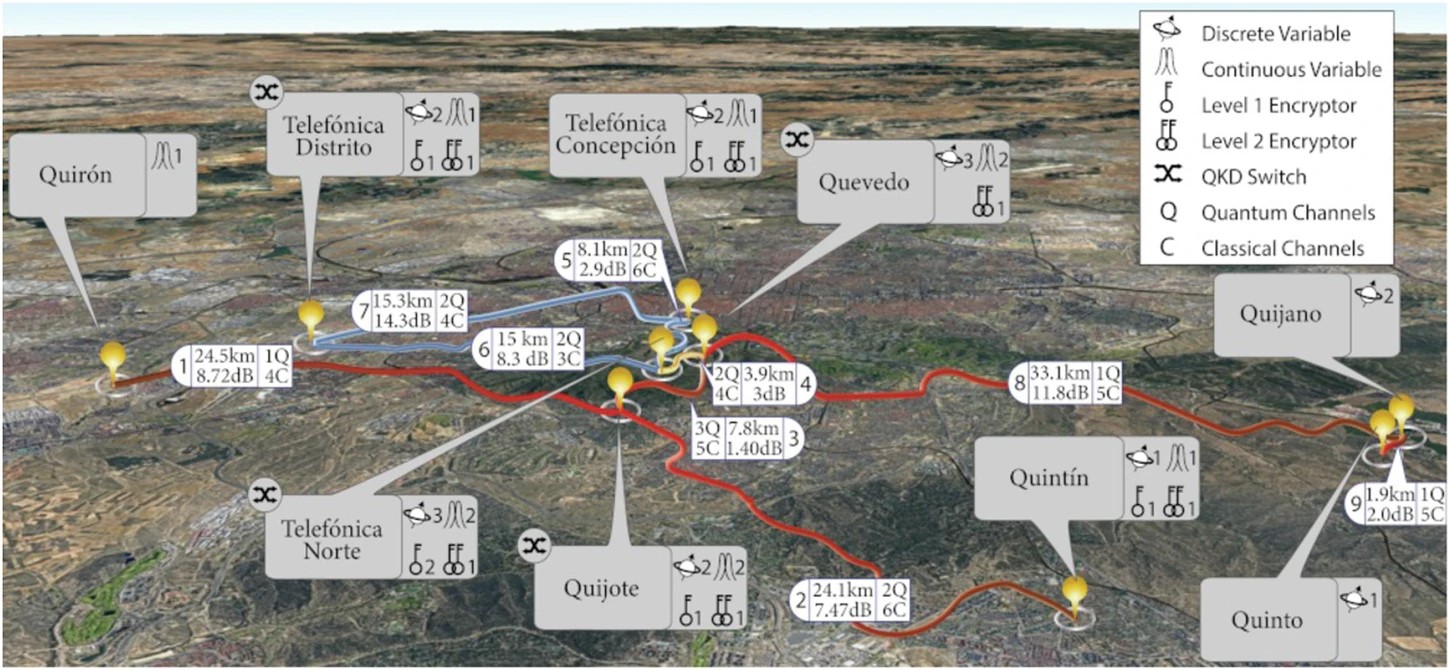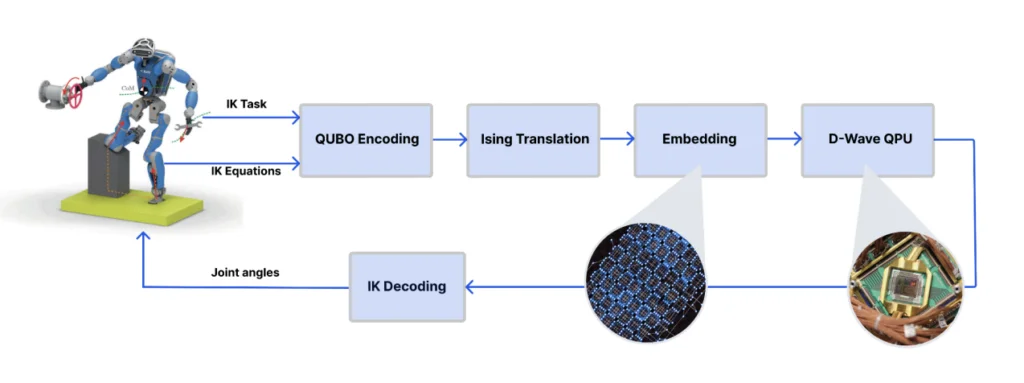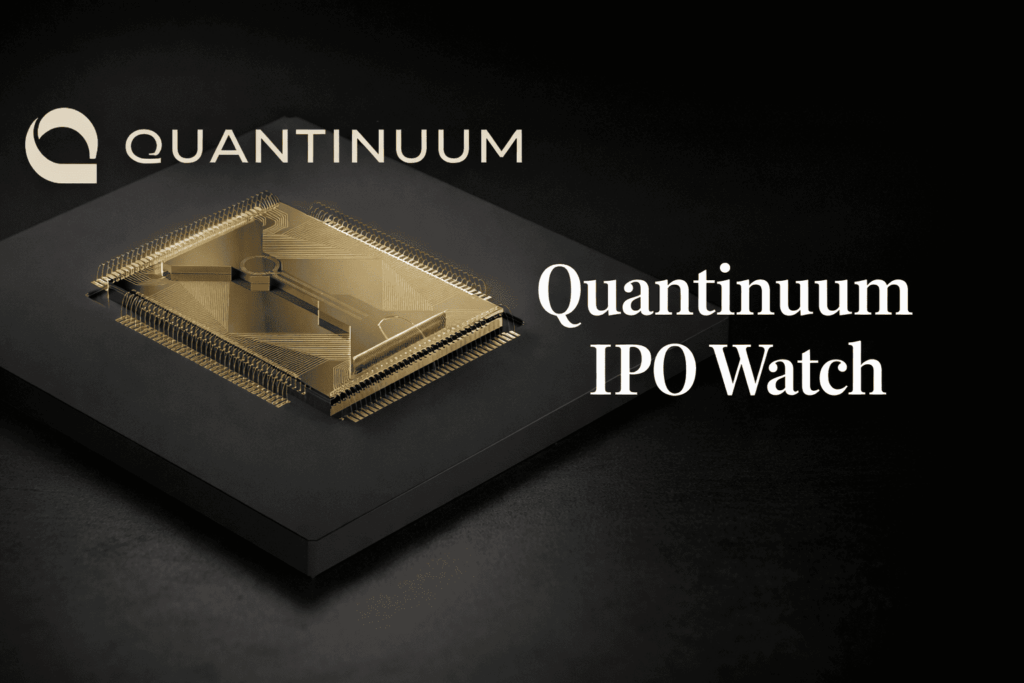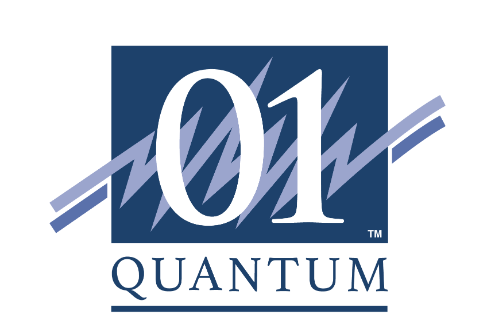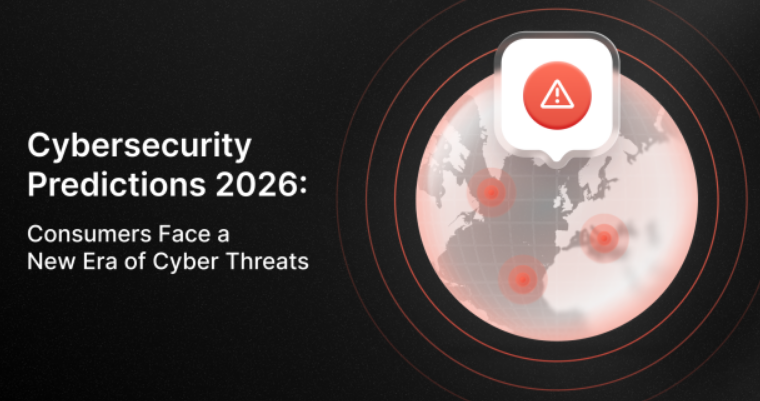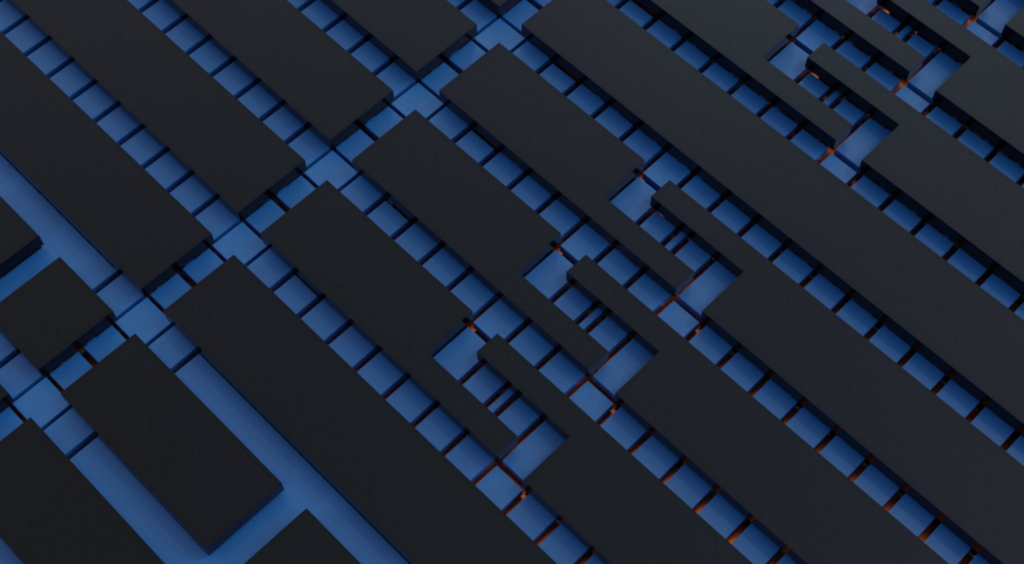Insider Brief:
- Researchers from the Universidad Politécnica de Madrid, Huawei Technologies, Nutshell Quantum-Safe, Toshiba Europe, Quside, and other European partners introduced MadQCI, a scalable and heterogeneous quantum key distribution network.
- MadQCI uses software-defined networking (SDN) and all-optical switches to dynamically establish quantum links.
- The network supports a wide range of QKD technologies and protocols, promoting interoperability and integration of new devices across nine interconnected nodes in the Madrid metropolitan area.
In a recent study published in npj Quantum Information, researchers from the Universidad Politécnica de Madrid, Huawei Technologies, Nutshell Quantum-Safe, Toshiba Europe, and Quside, in partnership with various European institutes, presented MadQCI, the Madrid Quantum Communications Infrastructure. MadQCI is a highly heterogeneous and scalable quantum key distribution network, within real-world production facilities. This represents a milestone in the integration of quantum and classical communication technologies, highlighting the potential for QKD to become a mainstream component of global telecommunications infrastructure.
A New Paradigm in Quantum Networking

Traditional QKD networks have primarily focused on maximizing the throughput of secret keys by creating isolated, fixed infrastructures designed to minimize disturbances to the quantum channel. However, these ad hoc setups, while effective in research environments, are neither scalable nor cost-effective for widespread deployment. According to the study, the MadQCI network addresses these limitations by adopting a software-defined networking paradigm for greater flexibility, upgradability, and integration within existing telecommunications networks.
The network consists of 28 QKD modules from various manufacturers, deployed across nine nodes in the Madrid metropolitan area. The nodes are interconnected via optical fibers that carry both quantum and classical communications, the study notes, providing an example of quantum/classical coexistence within the same physical infrastructure. This reduces costs and provides commercial viability of QKD technology by using existing telecommunications infrastructure.
Flexibility and Integration: Key to Future-Proof Quantum Networks
The study highlights that one of the standout features of the MadQCI network is its dynamic and modular architecture. Unlike traditional QKD networks, which often rely on dark fiber for quantum channels, MadQCI uses all-optical switches and SDN controllers to dynamically establish quantum links as needed. This flexibility increases the number of possible direct quantum connections within the network, adding to its resilience and scalability.
Additionally, the team points out that the network’s architecture supports a wide range of QKD technologies and protocols to promote interoperability between different devices and vendors. This heterogeneity is key for widespread adoption of QKD, as it allows network operators to integrate new devices and technologies with minimal disruption.
Real-World Applications
Over the course of nearly three years, the MadQCI network has been continuously tested and refined, with several segments running uninterrupted for extended periods. The study emphasizes that the network supports a variety of use cases across different sectors, including secure communications for commercial clients. As noted by the team, addressing critical needs in real-world scenarios adds to MadQCI’s claim of resilience and reliability.
The network’s versatility is further illustrated through specific use cases that highlight its broad applicability:
- Critical Infrastructure Protection: Secures essential services by ensuring encrypted data throughput (4 Gbps) for up to 100 users.
- Secure Network Management: Provides secure control over network infrastructures through self-healing capabilities, with a deployment time for software images of 24 seconds.
- Cloud Services: The use case supports QKD as a service, serving over 1,230 requests per second for secure key generation.
- 5G Use Cases: Demonstrates secure communications for 5G applications, emphasizing low latency (0.15 milliseconds) in serving requests.
- E-Health Services: Examines both real-time and non-real-time secure e-health communications with encrypted data throughput of 500 Mbps and a latency of 1.3 milliseconds.
- Ordered Proof of Transit (OPoT): Targets network security by ensuring data packets pass through a defined set of nodes in the correct order. The method introduces an average latency increase of 5.86 milliseconds per packet when using QKD for secure tagging.
Future Directions
Looking forward, the MadQCI may serve as a blueprint for future quantum communication infrastructures, such as the EuroQCI project intended to establish a pan-European quantum communications network. The lessons learned from the deployment and operation of MadQCI will inform the development of next-generation quantum networks, encouraging the broader adoption of quantum-safe communication technologies.
The authors involved in the study include V. Martin , J. P. Brito, L. Ortíz, R. B. Méndez, J. S. Buruaga, R. J.Vicente, A. Sebastián-Lombraña, D. Rincón, F. Pérez, C. Sánchez, M. Peev, H. H. Brunner, F. Fung, A. Poppe, F. Fröwis, A. J. Shields, R. I. Woodward, H. Griesser, S. Roehrich, F. de la Iglesia, C. Abellán, M. Hentschel, J.M. Rivas-Moscoso, A. Pastor-Perales, J. Folgueira, and D. López.

